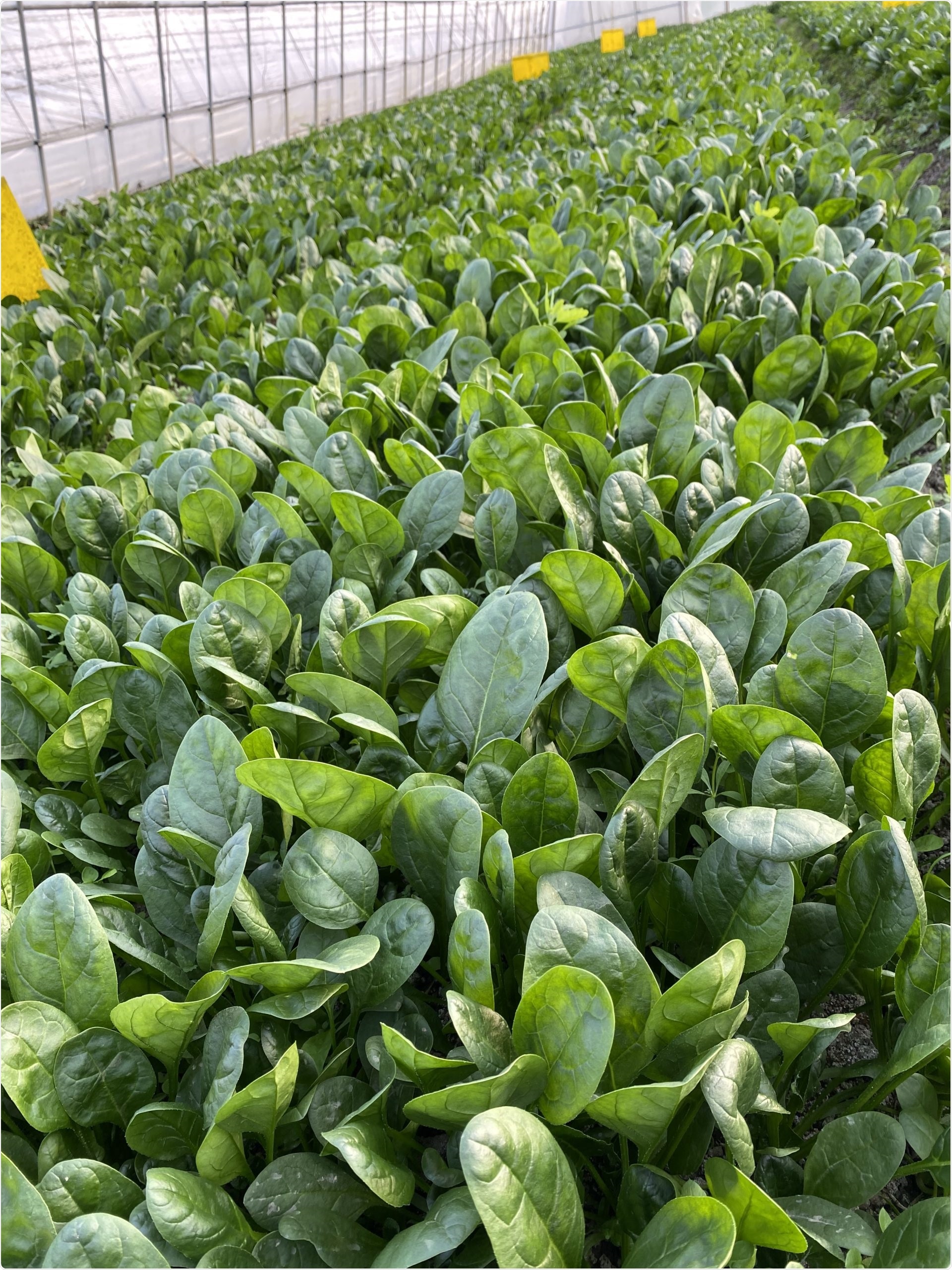People are generally familiar with “spinach teeth,” the harmless but gritty-chalky mouthfeel triggered because of a vegetable.

A cultivated variety of spinach grows in a greenhouse at Shanghai Normal University. Image Credit: Xiaofeng Cai.
A group of scientists from Boyce Thompson Institute (BTI) and six Chinese universities recently pinpointed genes in spinach that control its oxalate concentration, responsible for “spinach teeth.” The genes also help the plant fight downy mildew, a significant disease of commercial crops.
The findings would enable breeders to develop disease-resistant varieties of spinach with more consumer appeal. The study was published on December 13th, 2021, in the Nature Communications journal.
I think more consumers would be willing to buy spinach that has less oxalate. Dietary oxalate can interfere with mineral absorption and may lead to kidney stones, and less oxalate would also make spinach more palatable to a wider market.”
Zhangjun Fei, Study Co-Corresponding Author and Faculty Member, Boyce Thompson Institute
Zhangjun Fei co-led the research.
The study included contributors from BTI, Cornell, the U.S. Department of Agriculture (USDA), Shanghai Normal University, Zhejiang University, Zhejiang A&F University, Qinghai University, Qingdao Agricultural University, and Harbin Normal University.
The research compared and investigated the genomes of cultivated spinach (Spinacia oleracea) and two of its wild relatives (S. turkestanica and S. tetranda) to pinpoint genes associated with traits of interest to farmers, plant breeders, and consumers.
Our results provide rich resources for the spinach community, especially those working on increasing downy mildew resistance, improving leaf texture, and reducing oxalate content.”
Chen Jiao, Study Co-Corresponding Author and Professor, College of Agriculture and Biotechnology, Zhejiang University
Chen Jiao is a former postdoctoral researcher in Fei’s team.
Improving on the draft
In 2017, Fei’s laboratory recorded a draft spinach genome, whose quality was not great owing to technical limitations in the assembly process.
The current research used the Monoe-Viroflay cultivated variety of spinach, which is highly inbred, along with the robust sequencing and assembly technologies, enabling assembly of its genome much effortless and greater quality than the varieties utilized in the prior research.
The researchers also sequenced the genomes of 295 varieties of S. oleracea and 10 accessions of the two wild relatives. They then carried out genome-wide association studies (GWAS) and comparative genomic analyses to probe the plant’s evolutionary history and identify genes linked to particular traits.
The majority of the genetic differences between the cultivated and wild spinach resulted from the plant’s adaptation to new environments. It was known to spread from its origins in Persia (Iran) across Asia and Europe, with other variations mirroring the local preferences for traits like wrinkled or flat leaves.
I think our most interesting finding is that the genetic diversity between Asian and European spinach is higher than it is between cultivated and wild spinaches, which is not very common in other crops. This increases our knowledge of how human selection diversifies crop plants.”
Chen Jiao, Study Co-Corresponding Author and Professor, College of Agriculture and Biotechnology, Zhejiang University
The GWAS established the known role for the NBR-LRR family of genes in spinach downy mildew resistance. It also recognized other locations on the genome with lower, however vital roles in resistance, like a promoter region in WSD6, which codes an enzyme that might enhance the physical barrier of spinach during pathogen invasion.
“Like most plants, disease resistance in spinach is controlled by a network of genetic regions. If you can ‘stack’ disease-resistant gene variants into one variety then you will get better resistance than with just one gene variant,” added Fei who is also an adjunct professor in Cornell University’s School of Integrative Plant Science.
Down with oxalates
The researchers also identified two genes encoding metal ion and metal transporters that might control oxalates in spinach. Even though there is a need for further research to comprehend the complete function, modulating these genes to decrease oxalates can aid enhance the market with cultivars that enhance human health and attract consumers who do not like the vegetable due to “spinach teeth”.
According to Fei oxalates might play a significant role in spinach survival, like averting pathogens and pests. If that is the case, decreasing oxalates would also necessitate recognition and modification of other genes to retain the plant’s protective mechanisms.
Fei concludes, “Plants usually depend on networks of genetic factors to defend themselves; removing one means findings the right balance among the others.”
Source:
Journal reference:
Cai, X., et al. (2021) Genomic analyses provide insights into spinach domestication and the genetic basis of agronomic traits. Nature Communications. doi.org/10.1038/s41467-021-27432-z.